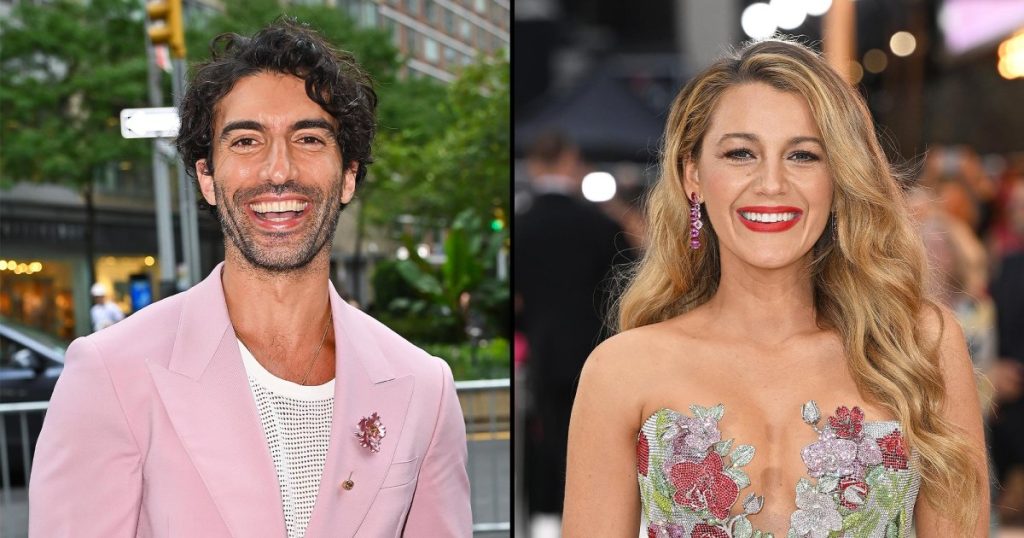The relationship between actor and director Justin Baldoni and actress Blake Lively, costars in the film adaptation of Colleen Hoover’s “It Ends With Us,” took a dramatic turn from initial public praise to legal battles and accusations of harassment and smear campaigns. Baldoni, who directed and starred as the abusive male lead opposite Lively, initially lauded her creative input and collaborative spirit in interviews. He emphasized her influence on the film’s portrayal of sensitive scenes, highlighting her role as executive producer and her commitment to a female-centric perspective on the story, especially regarding the depiction of intimate and abusive moments. He even credited her husband, Ryan Reynolds, for contributing to the script, further emphasizing a seemingly positive working relationship.
However, this façade of collaboration crumbled in late December 2024. News broke of Lively filing a lawsuit against Baldoni for sexual harassment. The details of the harassment claims were not publicly disclosed initially, but the lawsuit marked a sharp contrast to Baldoni’s prior effusive comments about Lively. The legal action immediately shifted the narrative from one of creative partnership to one of alleged misconduct and a potentially hostile work environment. The timing of the lawsuit, following the film’s August release, raised questions about the events leading up to the legal action and the reasons for the delay in bringing the allegations forward.
Baldoni’s response to the lawsuit, issued through his lawyer, was swift and categorical. He vehemently denied the allegations, labeling them as “completely false, outrageous, and intentionally salacious.” His legal team further claimed that Lively’s lawsuit was a strategic maneuver to salvage her allegedly damaged reputation and to control the narrative surrounding the film’s production. They accused Lively of making escalating demands and threats during filming, including threats to boycott promotional activities, which they claimed contributed to the film’s underperformance at the box office. This counter-narrative painted a picture of Lively as a difficult and manipulative actress, wielding her influence to exert control over the production.
The legal battle intensified further when Baldoni, along with several other plaintiffs including producers and publicists involved with the film, filed a $250 million lawsuit against The New York Times. This lawsuit, centered on an article titled “We Can Bury Anyone: Inside a Hollywood Smear Machine,” accused the newspaper of libel and invasion of privacy. The plaintiffs argued that the article misrepresented the situation, selectively using information and omitting crucial context to create a false narrative, thereby damaging their reputations. They contended that Lively was orchestrating a smear campaign against Baldoni, using the sexual harassment allegations as leverage. This countersuit broadened the legal conflict, drawing in a major media outlet and escalating the accusations beyond the initial harassment claims.
Lively’s legal team responded to Baldoni’s lawsuit against The New York Times, refuting the “false premise” that her initial complaint was a mere tactic and reiterating the validity of her sexual harassment claims. They emphasized that the lawsuit against the newspaper did not invalidate her complaints against Baldoni and Wayfarer Entertainment, filed with the California Civil Rights Department and a federal court. They encouraged the public to review the full complaint to understand the extent of her allegations, indicating a determination to pursue her claims vigorously. This back-and-forth between legal teams highlighted the deeply entrenched conflicting narratives and the complex legal landscape surrounding the case.
The rapidly escalating legal battle between Baldoni and Lively, initially framed as collaborators on a high-profile film adaptation, unveiled a complex web of accusations and counter-accusations. The public pronouncements of mutual respect and creative partnership gave way to allegations of sexual harassment, smear campaigns, and manipulative behavior. The involvement of The New York Times further complicated the narrative, raising questions about media representation and the power dynamics within Hollywood. The stark contrast between the initial portrayal of a positive working relationship and the subsequent legal fallout left a cloud of uncertainty hanging over the “It Ends With Us” project, turning what seemed like a collaborative effort into a public legal battle.

